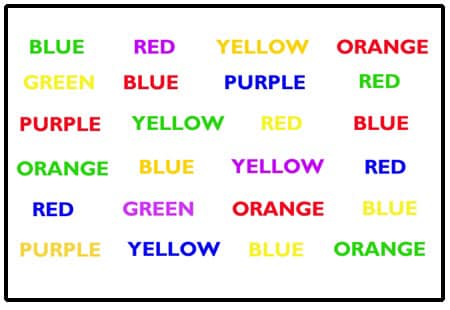|
I find the concept of disorientation unique in the understanding of dyslexia.
All of us disorientate. We disorientate in order to fall asleep. We disorientate when we day dream. Simply put, disorientation is the mind processing our imagination as though it was reality. Have you ever experienced being in a stationary vehicle, when another vehicle to the front or side of you moved unexpectedly. Suddenly, you felt you were in motion when in fact you remained stationary. Due to the conflict of sensory information that your brain and eyes register, it causes the brain to compromise and distort both perceptions, thereby creating a perceptual illusion. In the case of dyslexia, this natural process of disorientation is triggered by confusions about the identity or meaning of a symbol. As such, the lower the threshold for confusion, the more prone a dyslexic tends to disorientate. In my experience, my daughter’s threshold for confusion is so low that any word taught to her only registered once and the next second, she would disorientate and appear not to have recognised the word just learnt. What then are the signs of disorientations to watch out for? Some of these include omissions or alterations of letters, numbers or words, skipping a line while reading, stopping or hesitating, speeding up or slowing down, frowns or looks confused, concentration intensifies, voice tone becomes monotonous or changes pitch, starting to rock or tap the foot, changes in size of written letters or writing goes off at a slant. To experience what it’s like being disorientated, try the stroop test exercise. First, say the words (eg blue, red, yellow, orange, green, blue, purple, red….) in the box above as fast as you can. Next, say the colour of the words (eg green, purple, yellow, red, yellow, red, blue, green) as fast as you can. Which is easier? How does it make you feel when you try to say the colour of the words (instead of the words) the second time round? I feel my brain a bit “jammed” as it goes back and forth trying to “sort out” the data my eyes see, what my brain is telling me and what my mouth wants to read. It is important to appreciate that during this state of disorientation, information given or learning imparted to a dyslexic can be mis-seen, mis-heard or misinterpreted, which explains why the child mis-reads was for saw, mis-hears the pronunciation of a word, or confuses an explanation given, for example.
0 Comments
Leave a Reply. |
Categories
All
Christina TanChristina has a Diploma in Disability Studies and is a licensed Davis Facilitator. |
|
|
Professional services described as Davis™, including Davis™ Dyslexia Correction, Davis™ Symbol Mastery, Davis™ Orientation Counseling, Davis™ Attention Mastery, Davis™ Math Mastery, and Davis™ Reading Program for Young Learners may only be provided by persons who are trained and licensed as Davis Facilitators or Specialists by Davis Dyslexia Association International. |



 RSS Feed
RSS Feed

